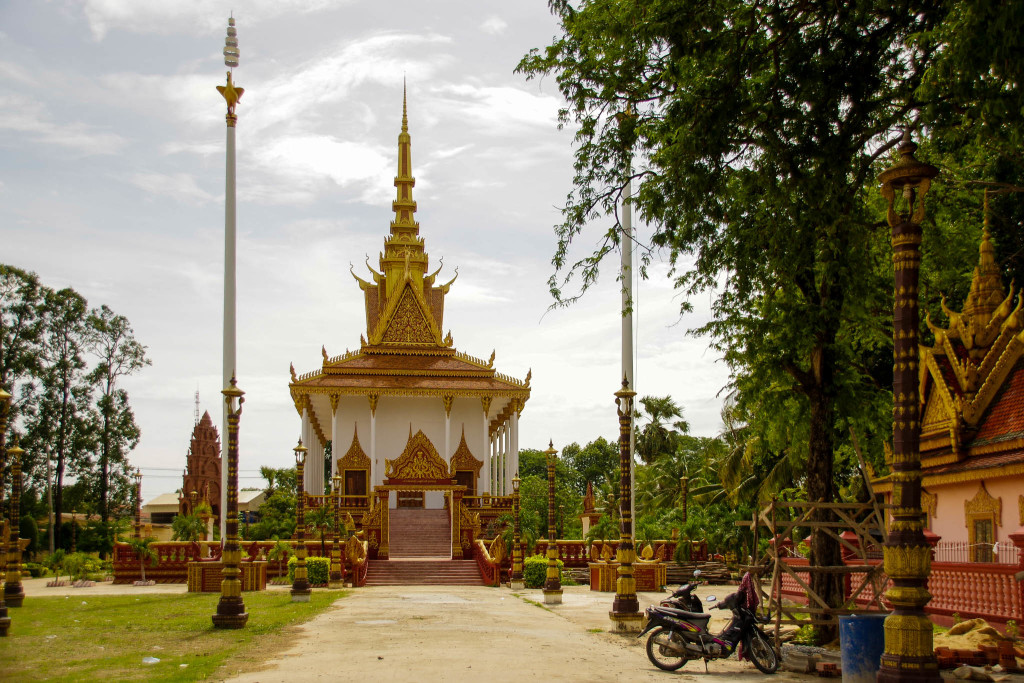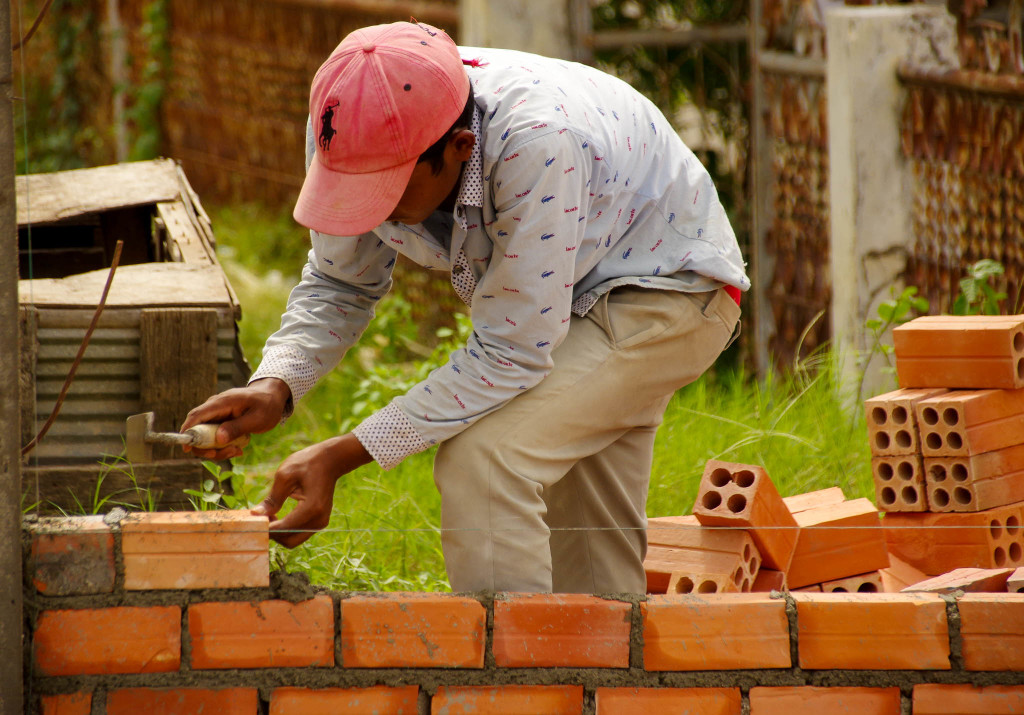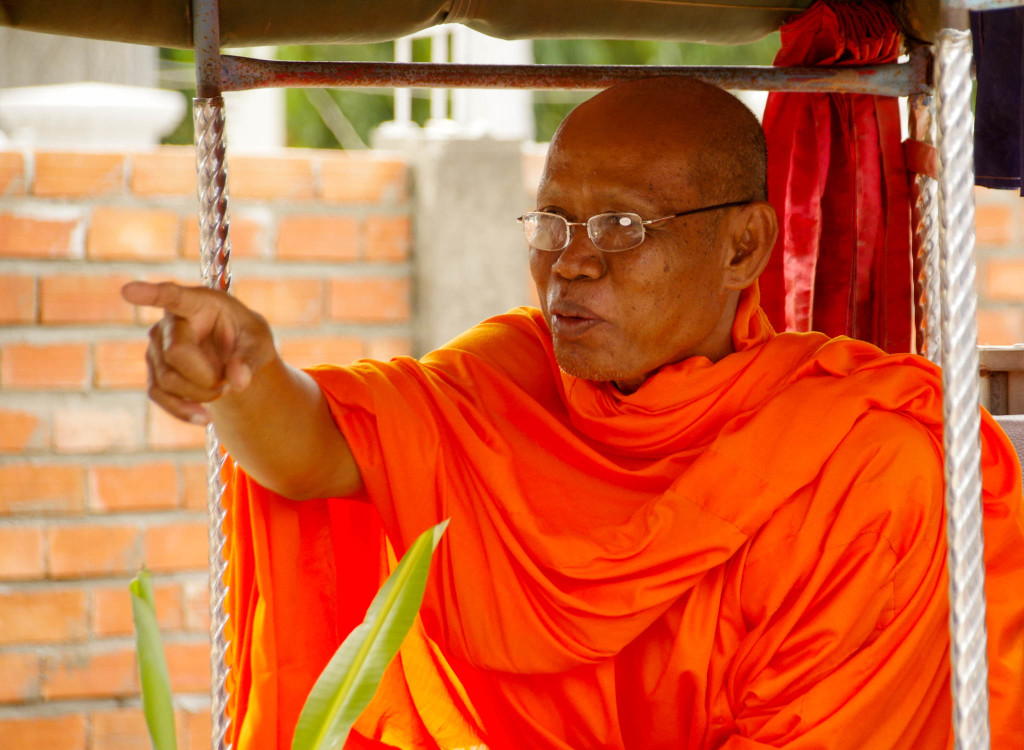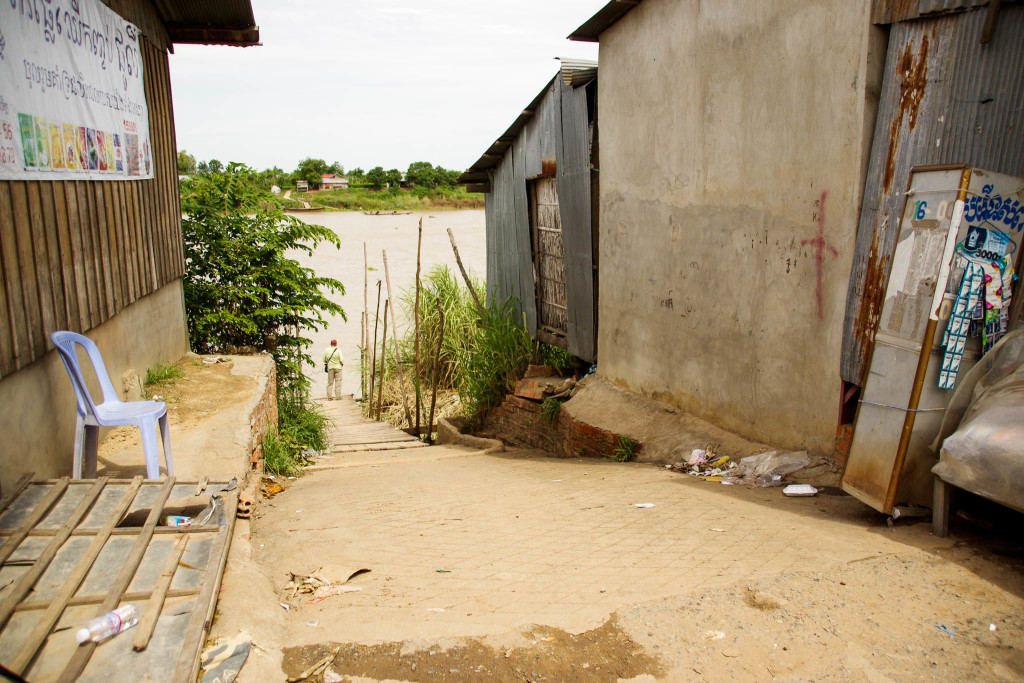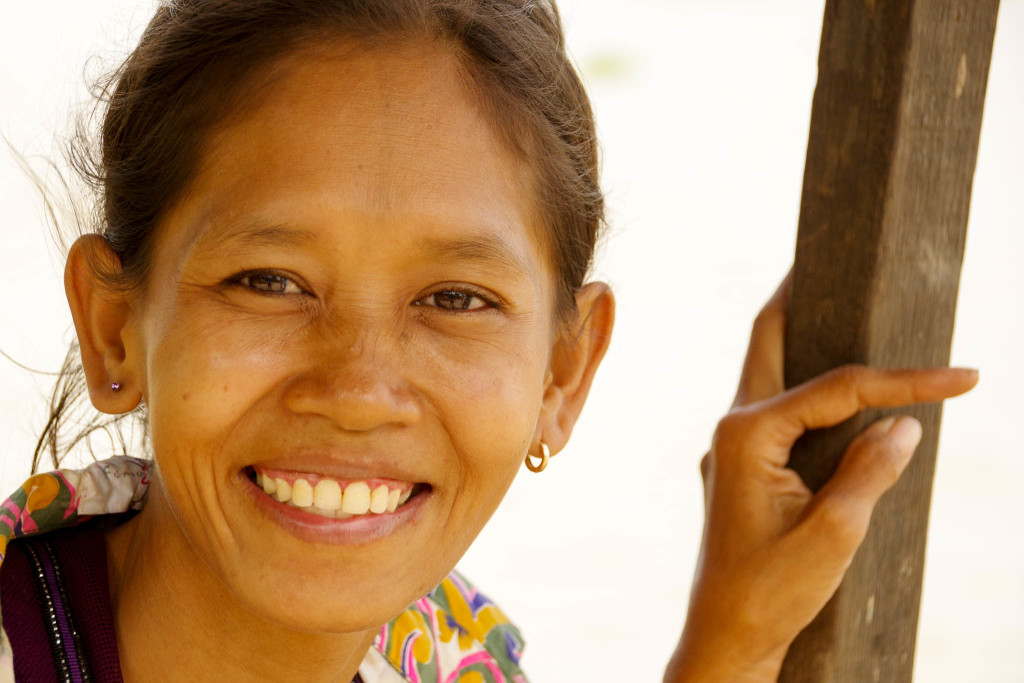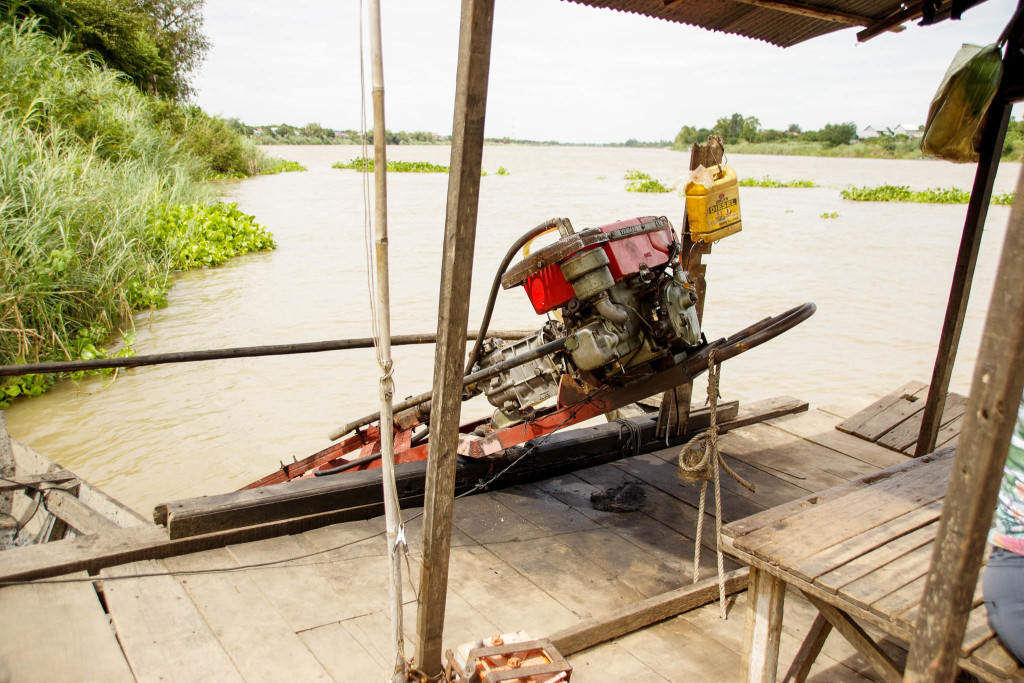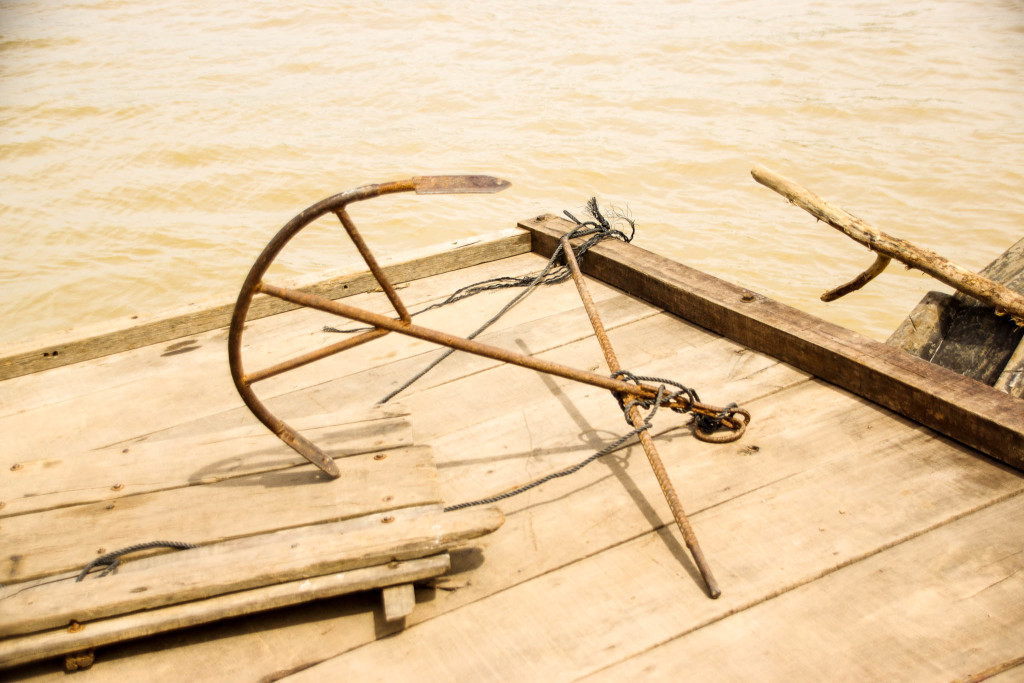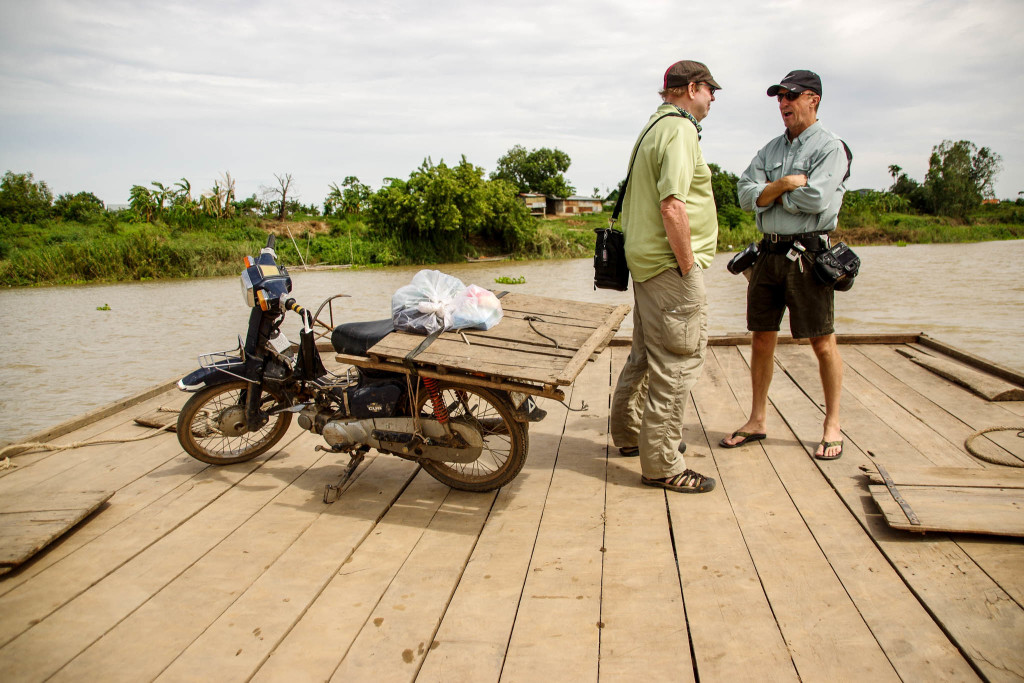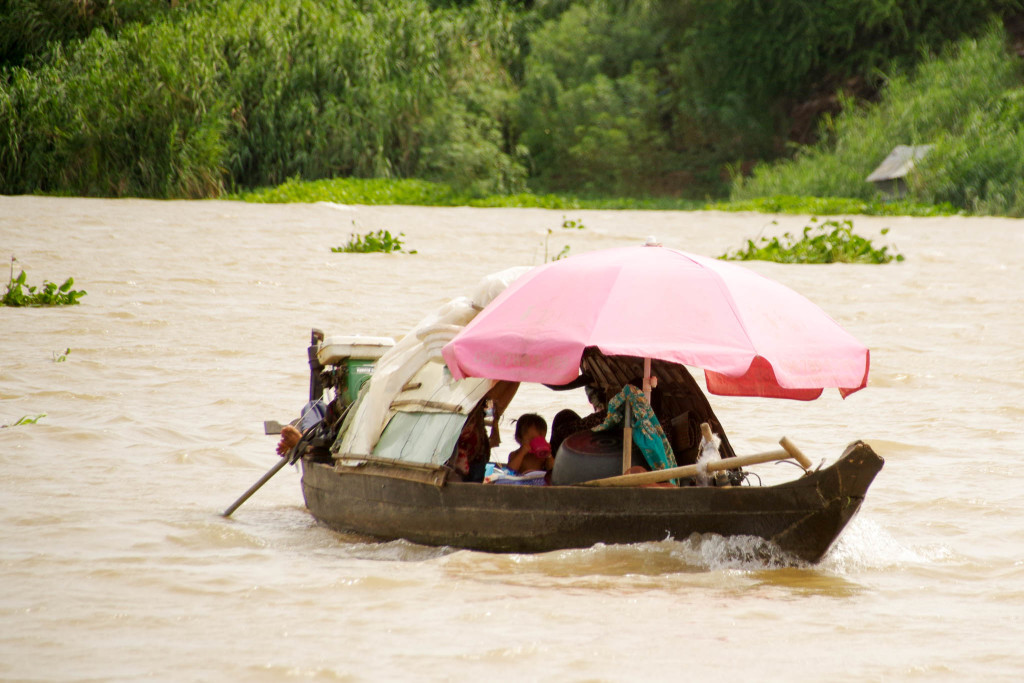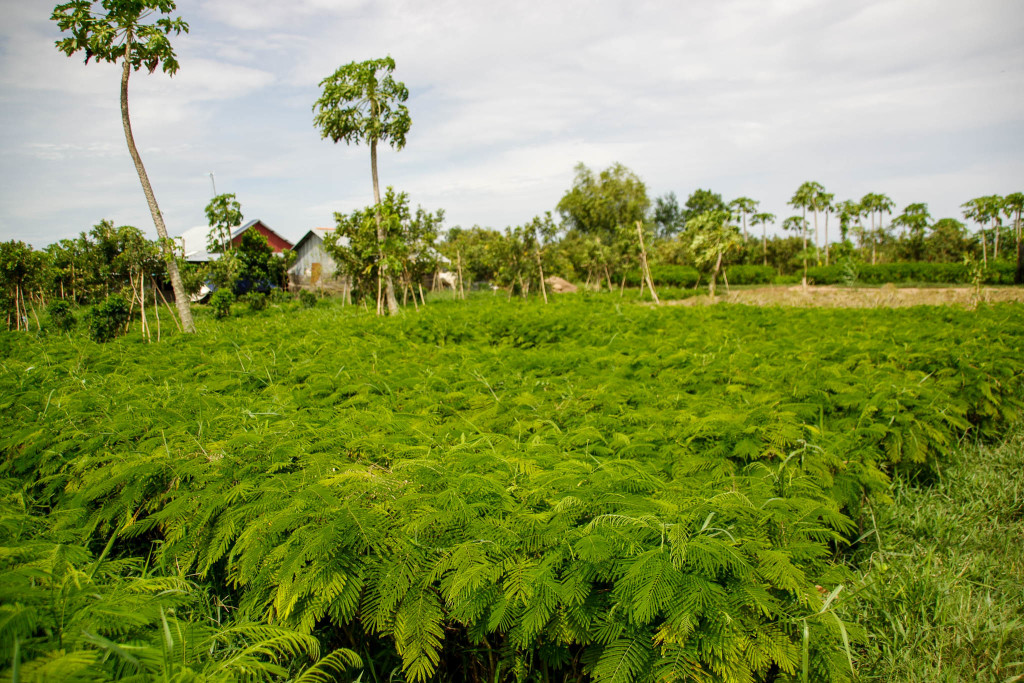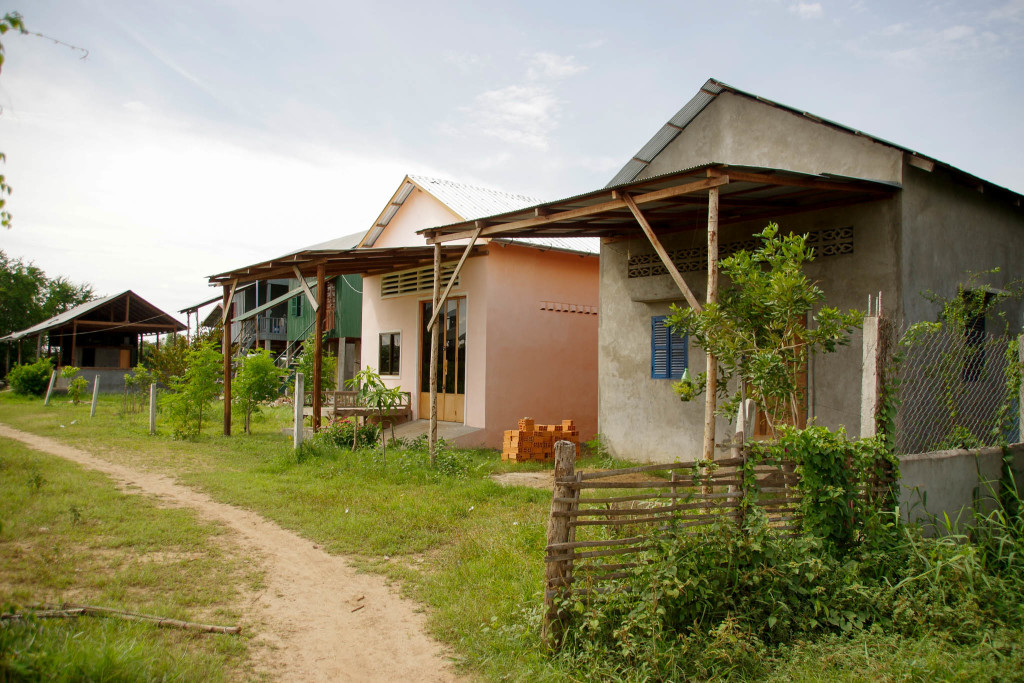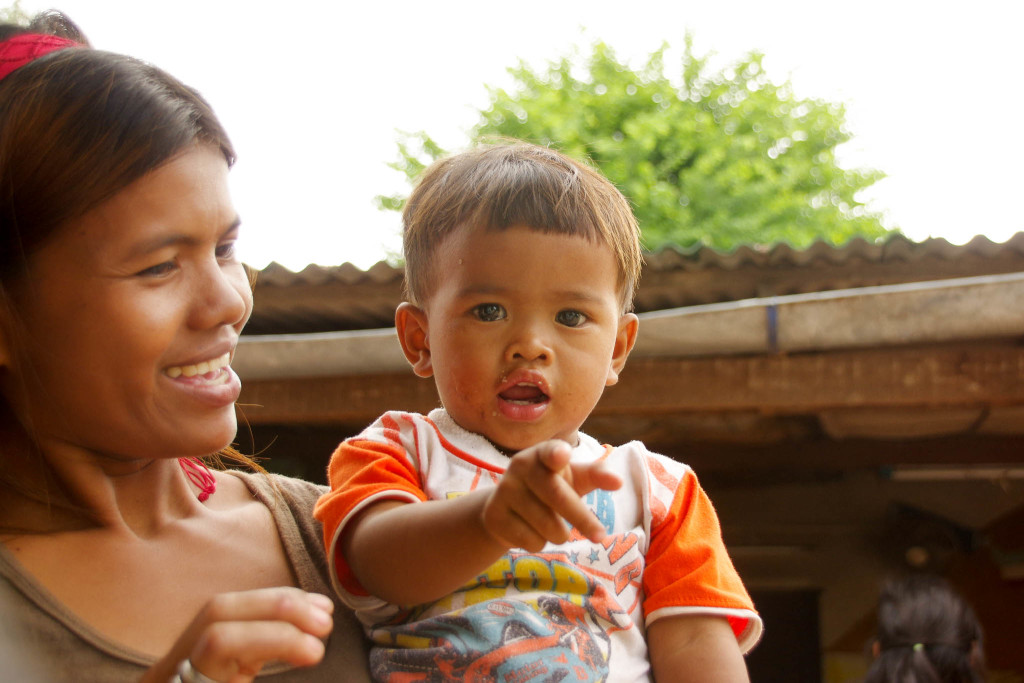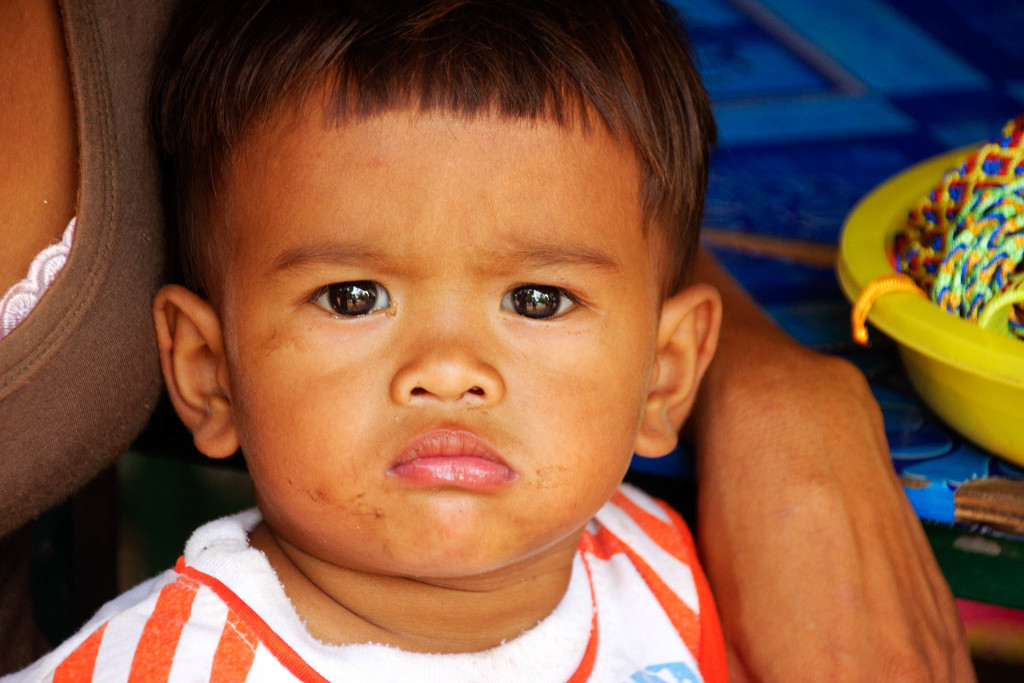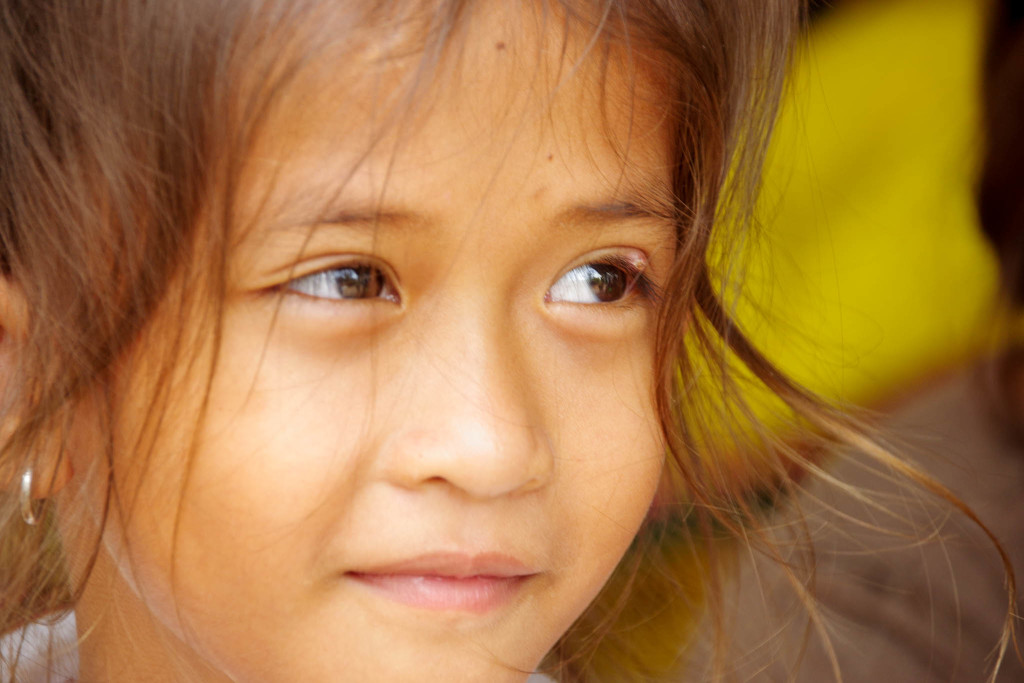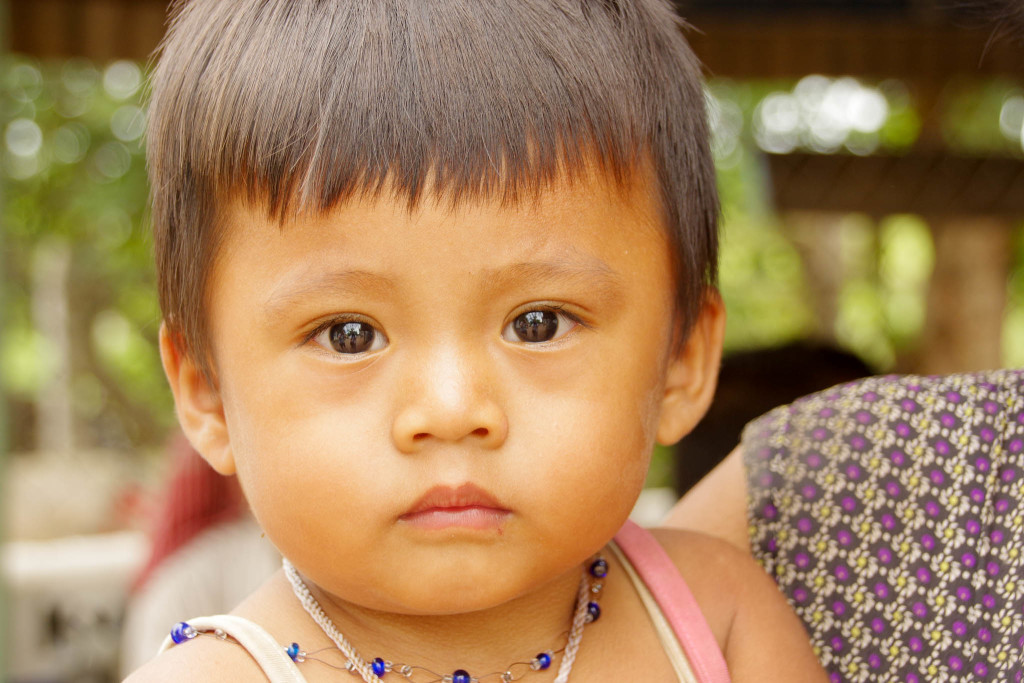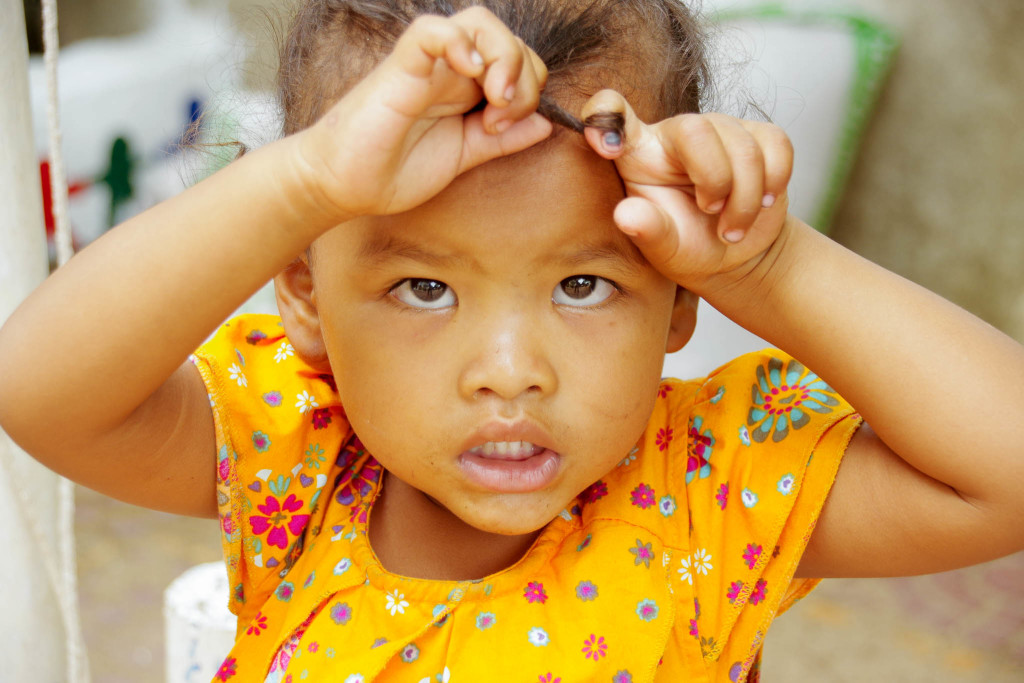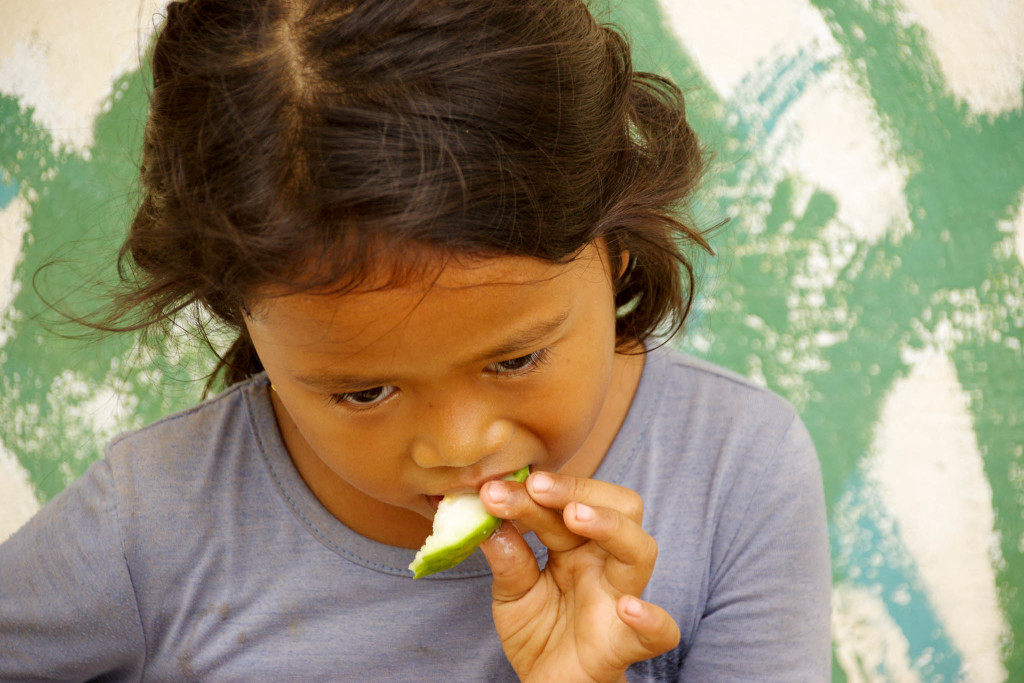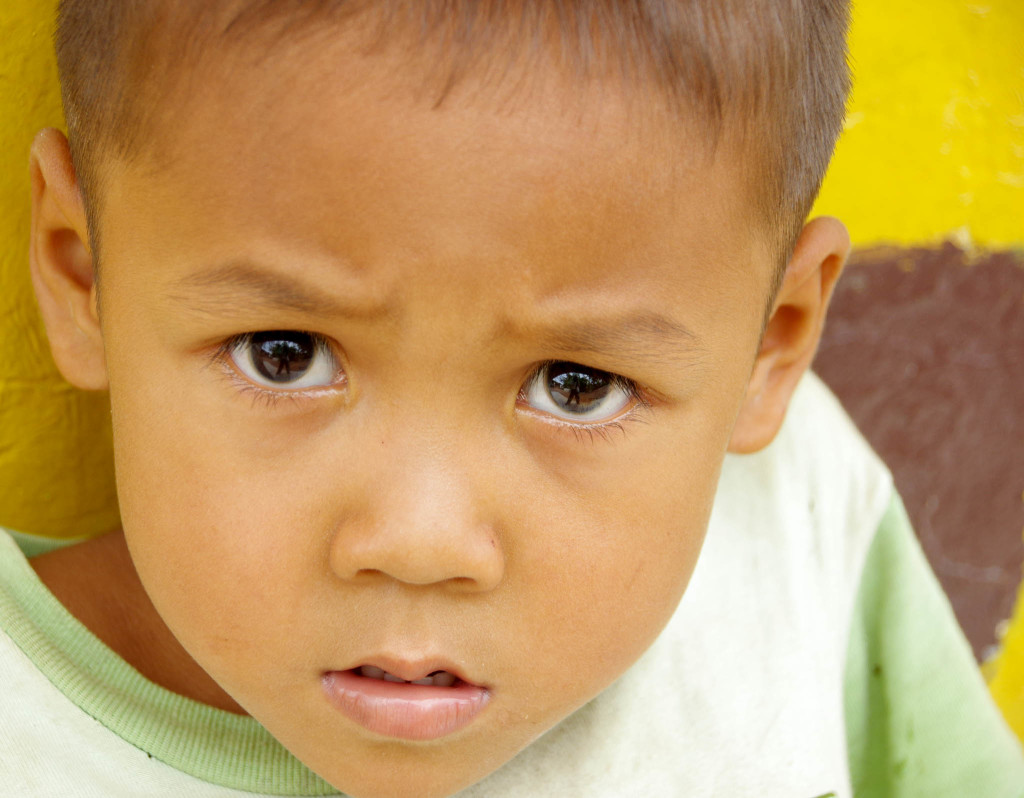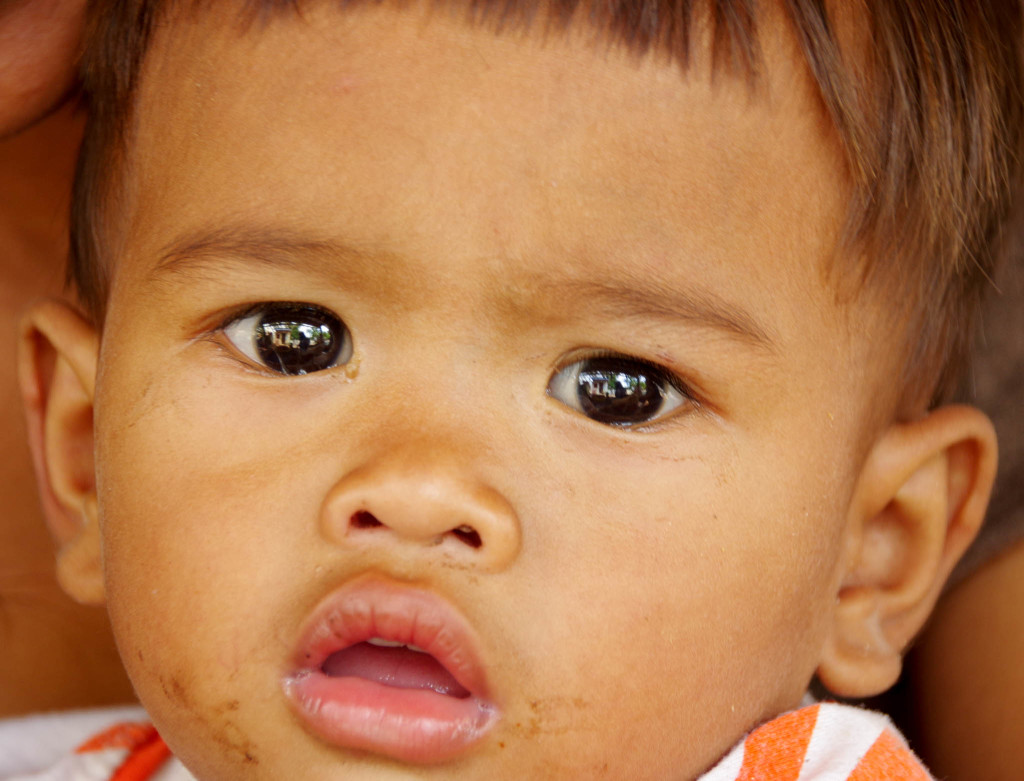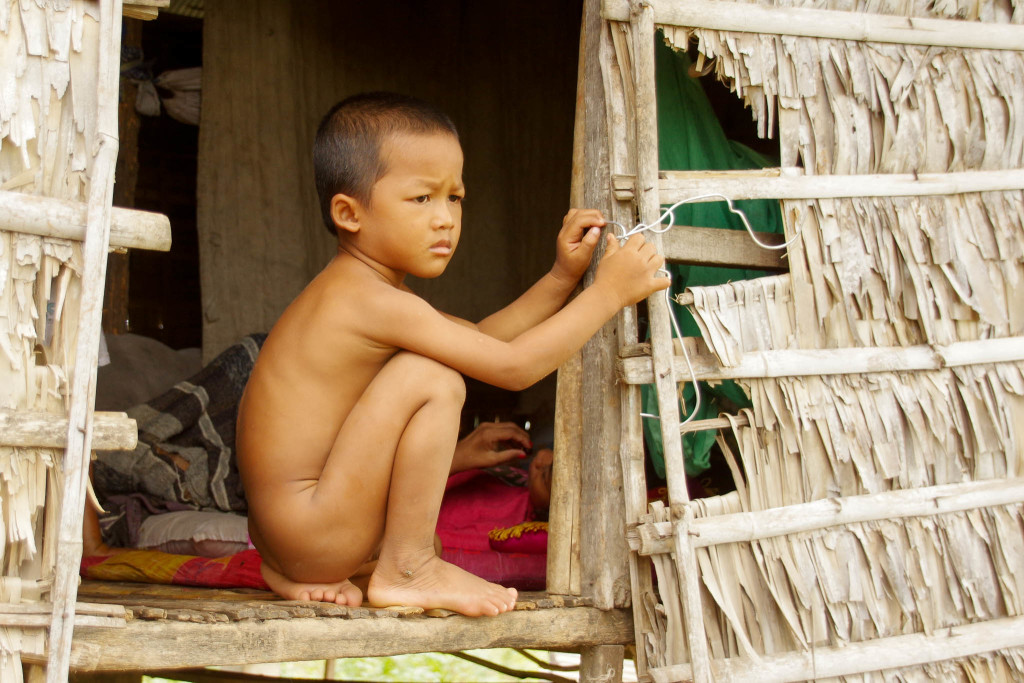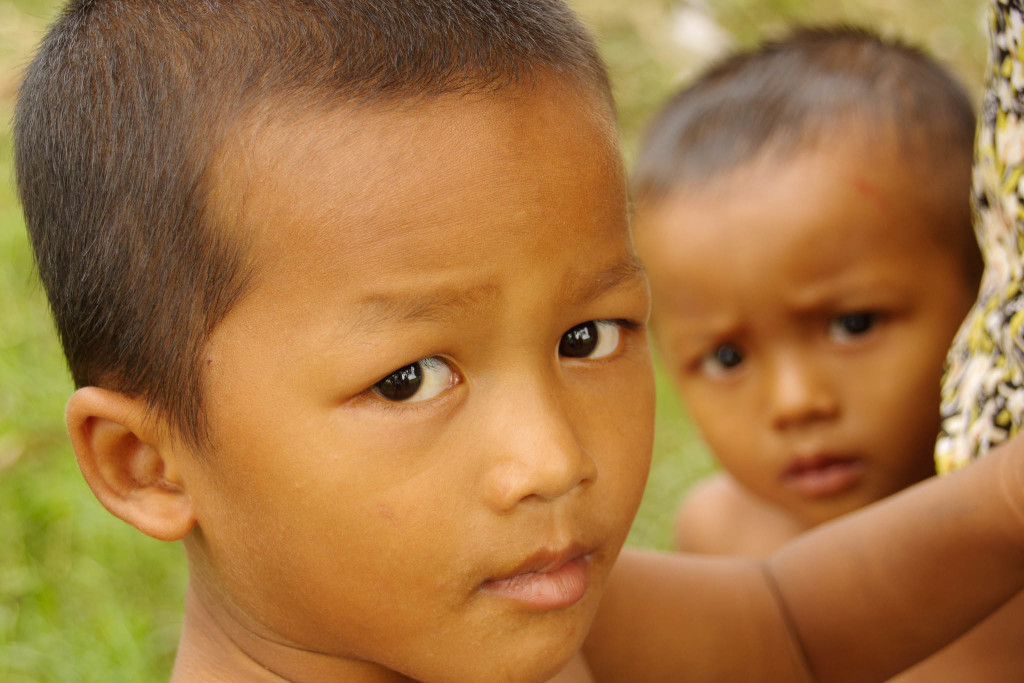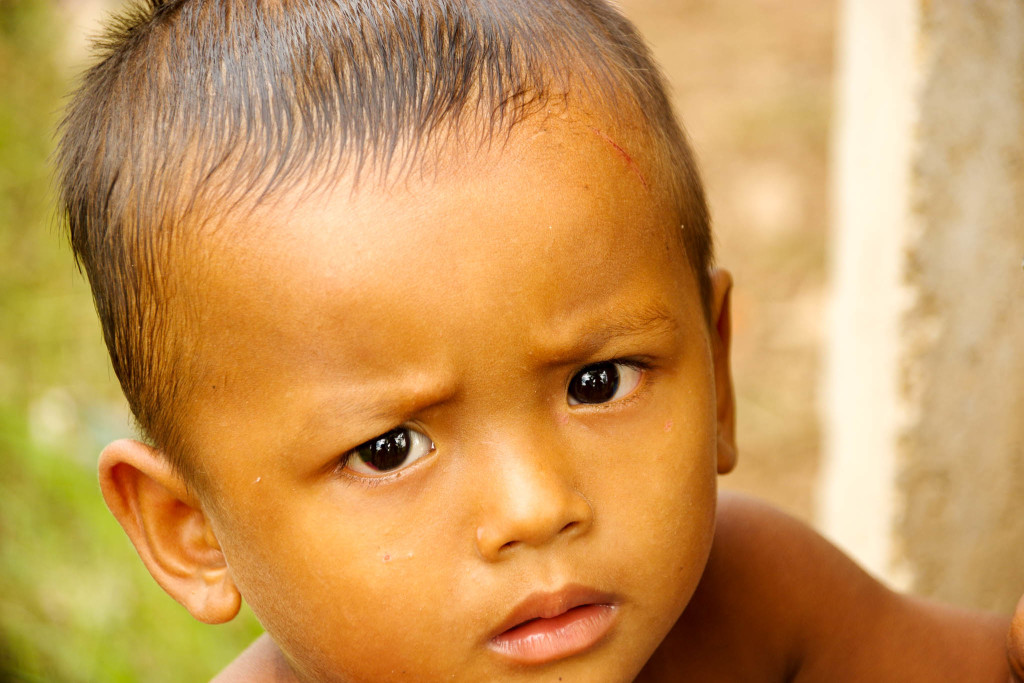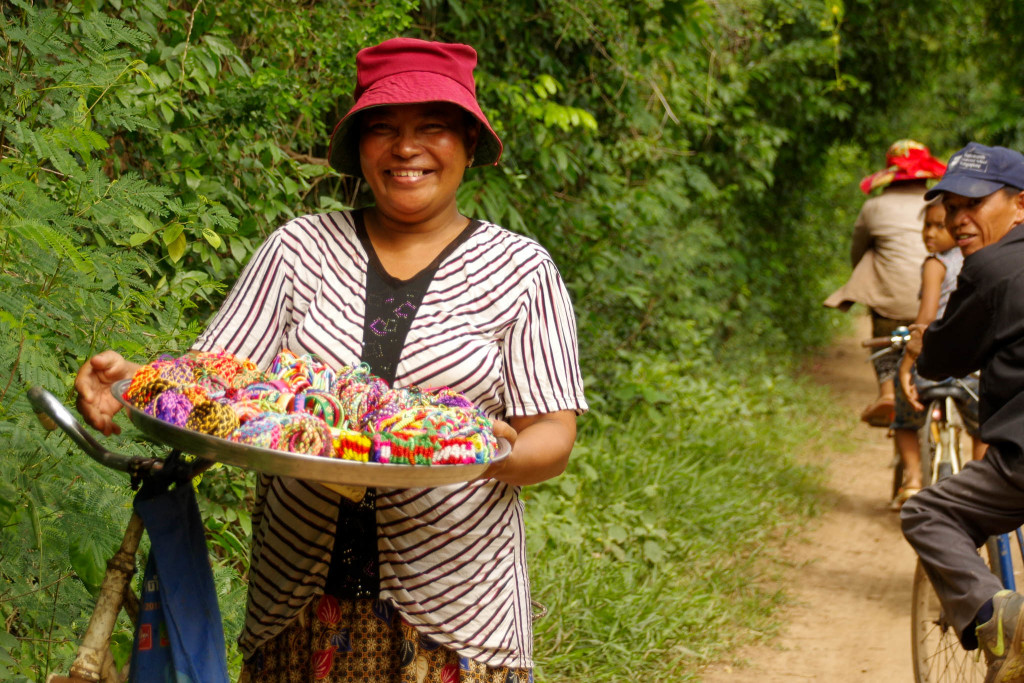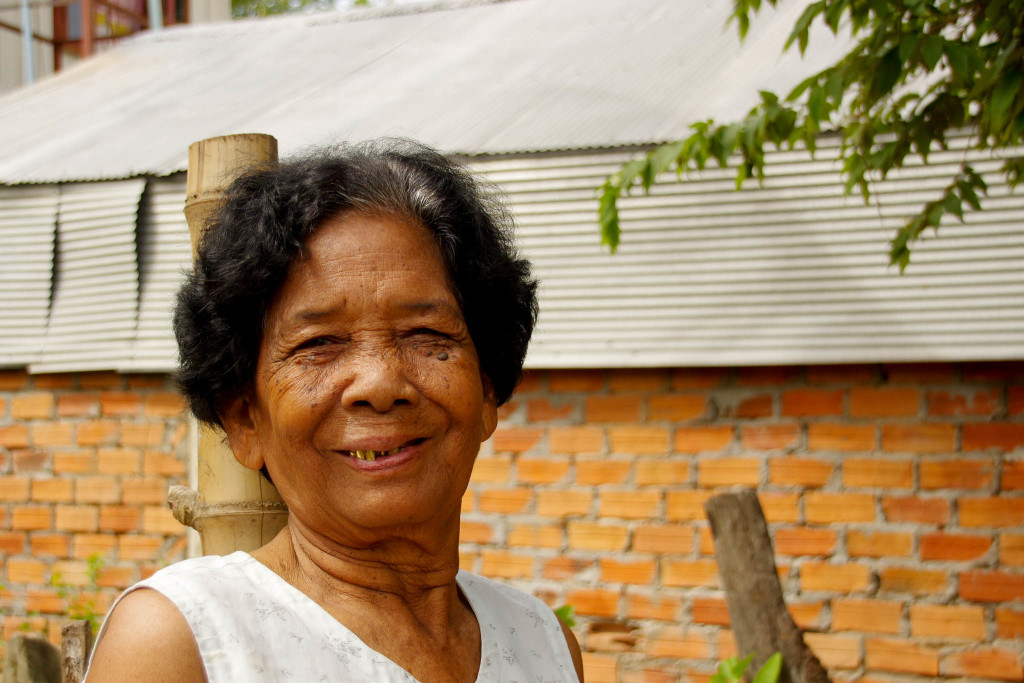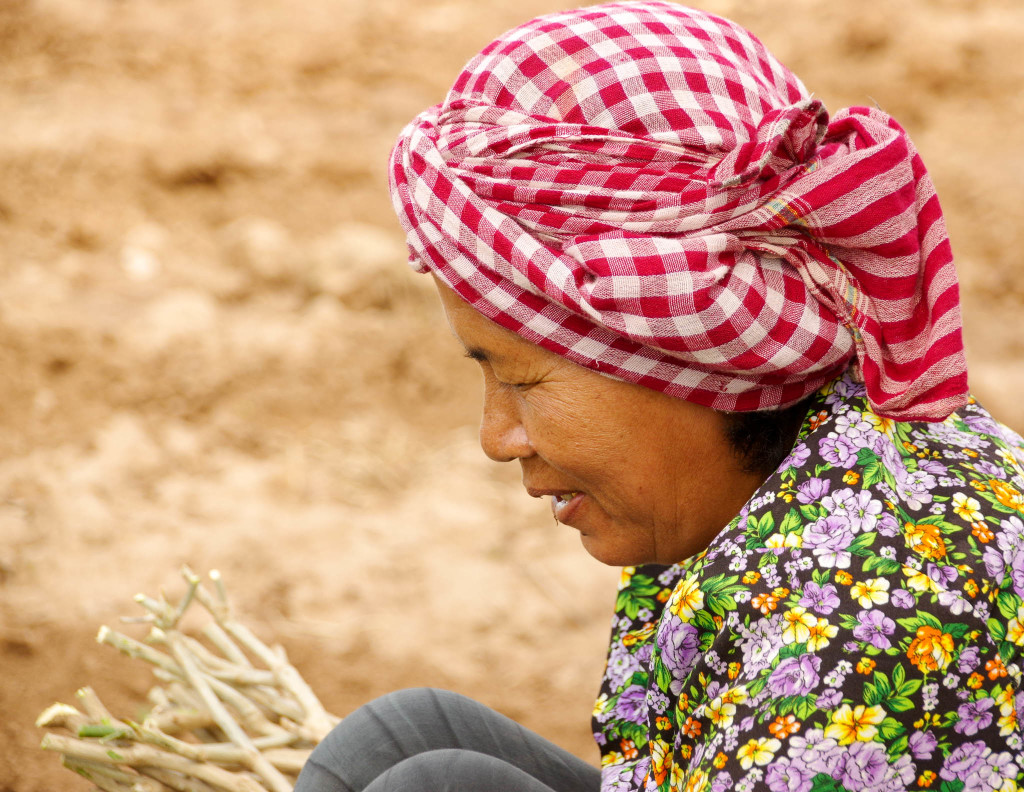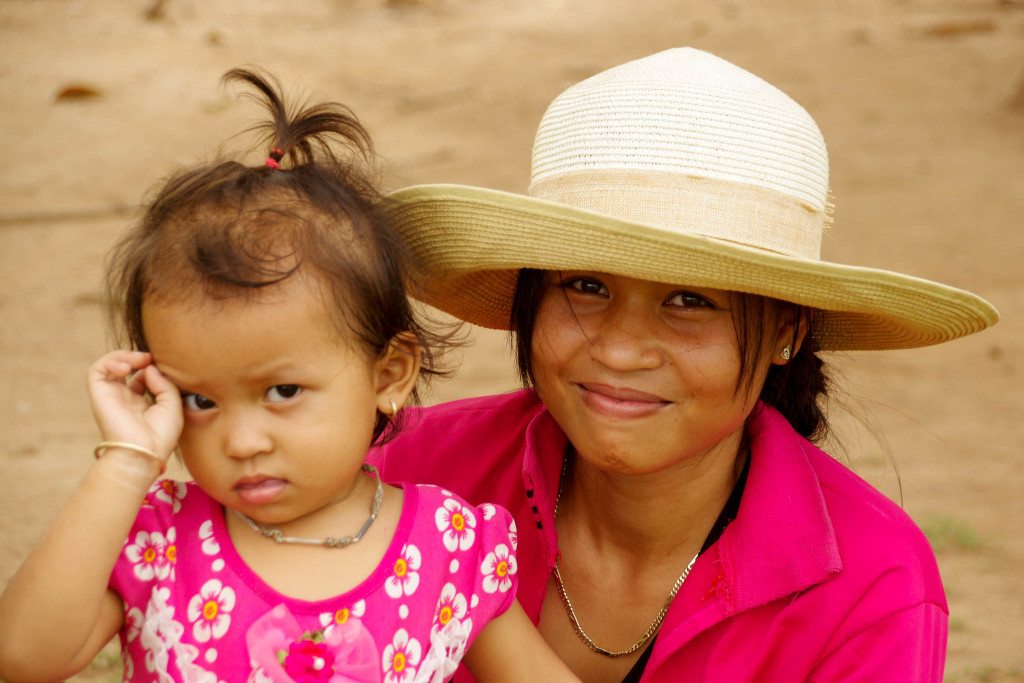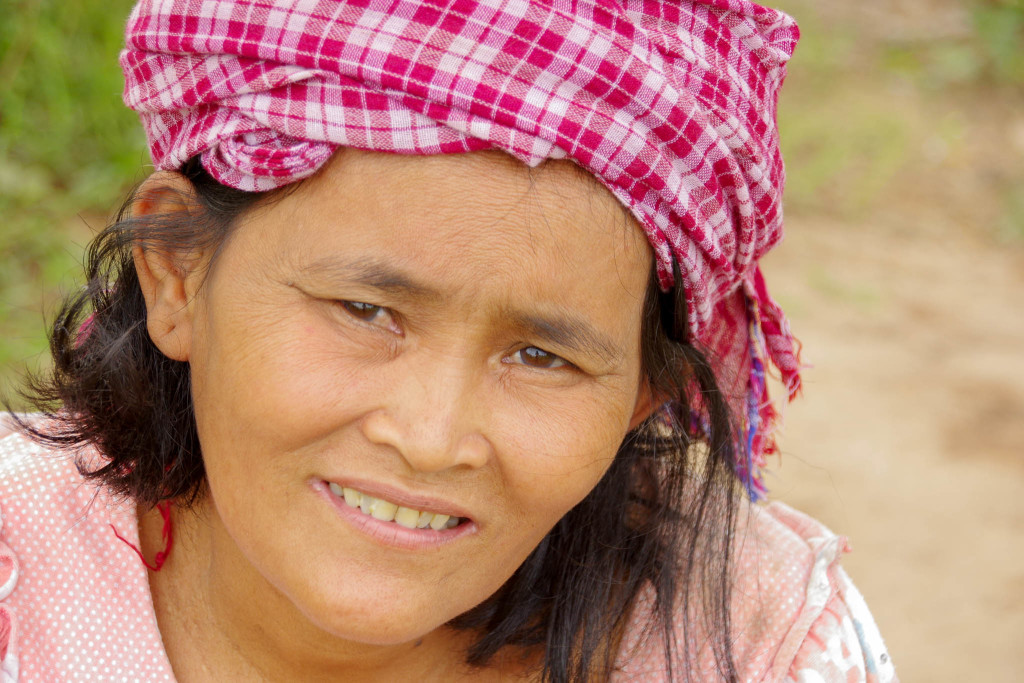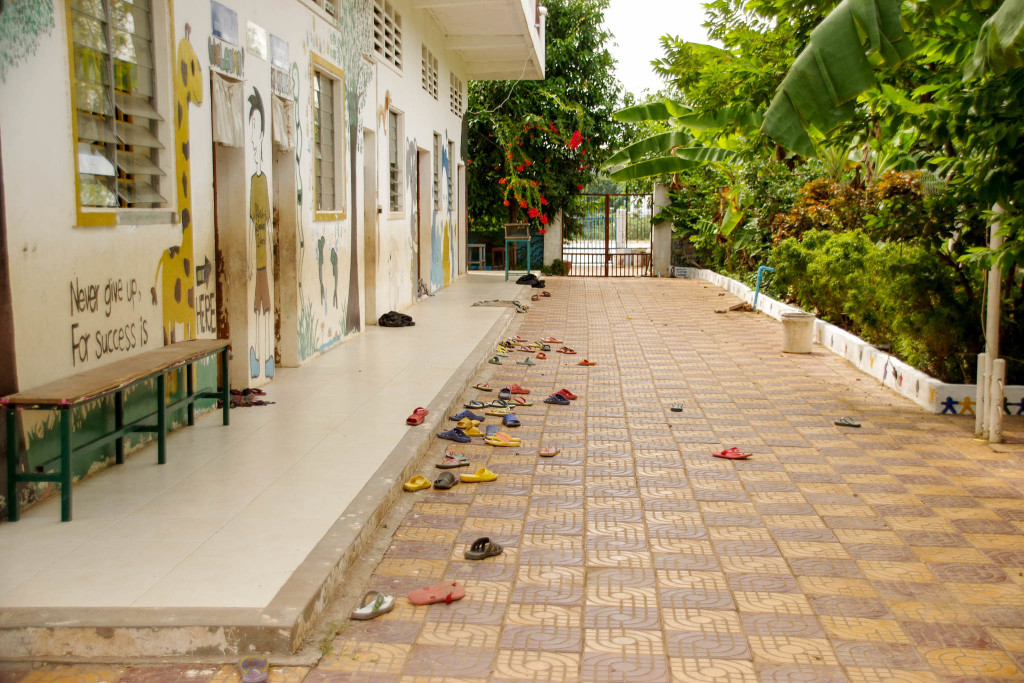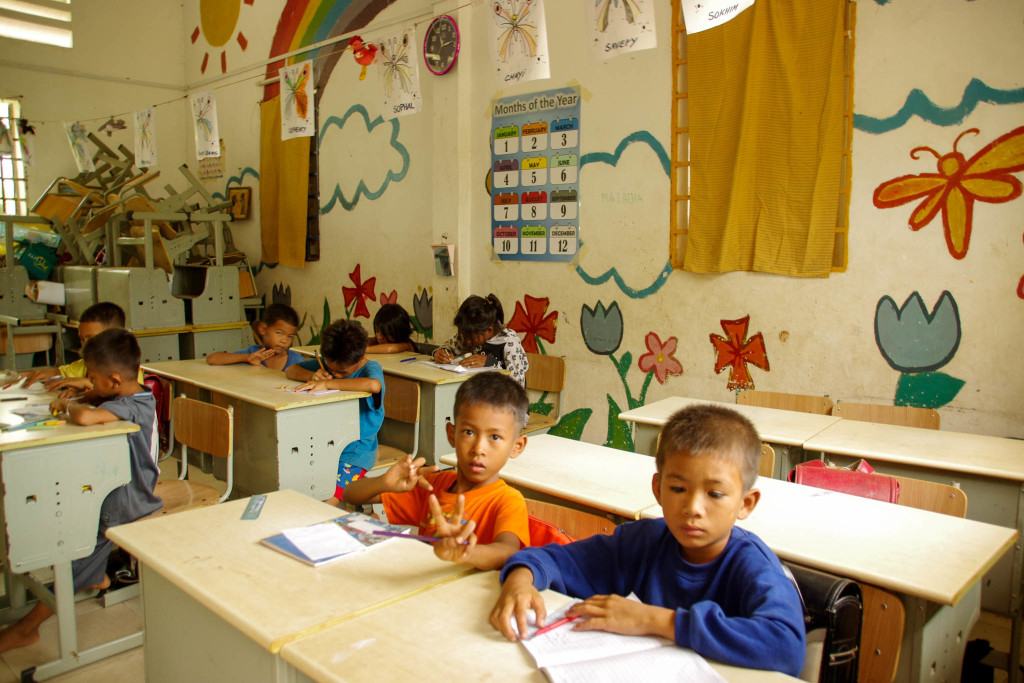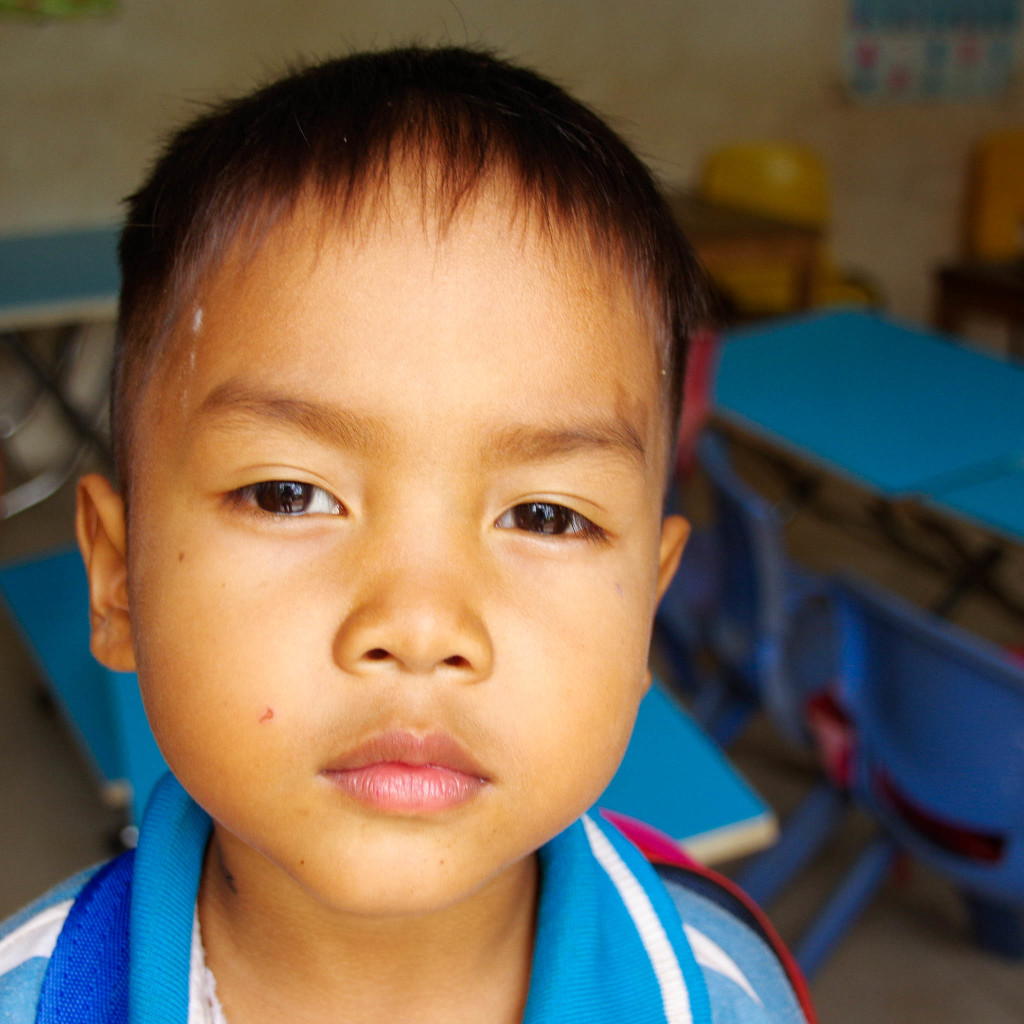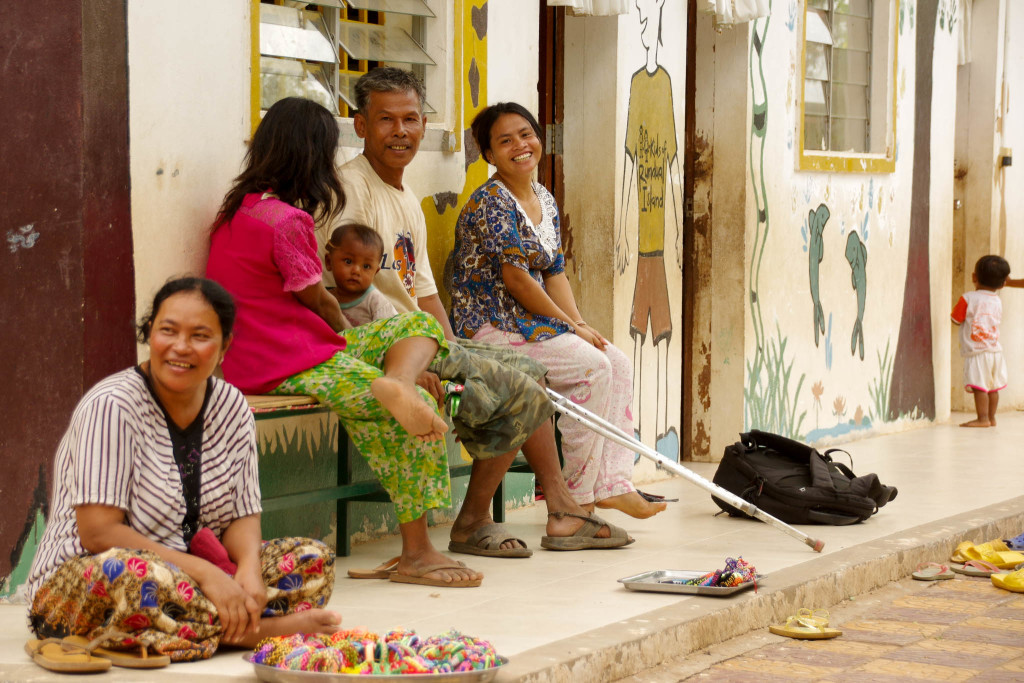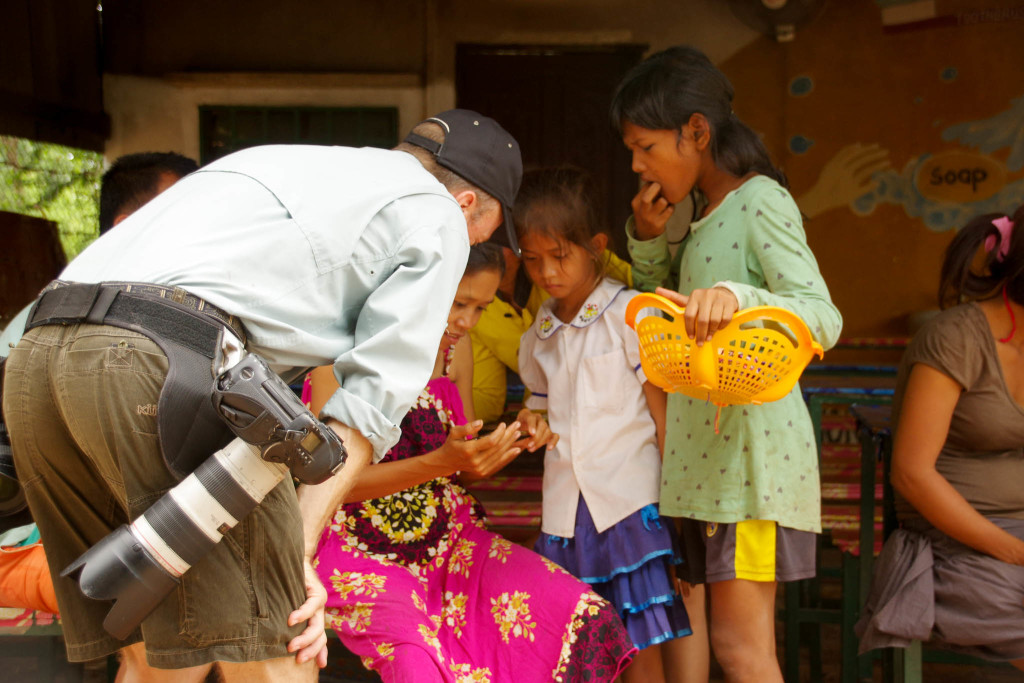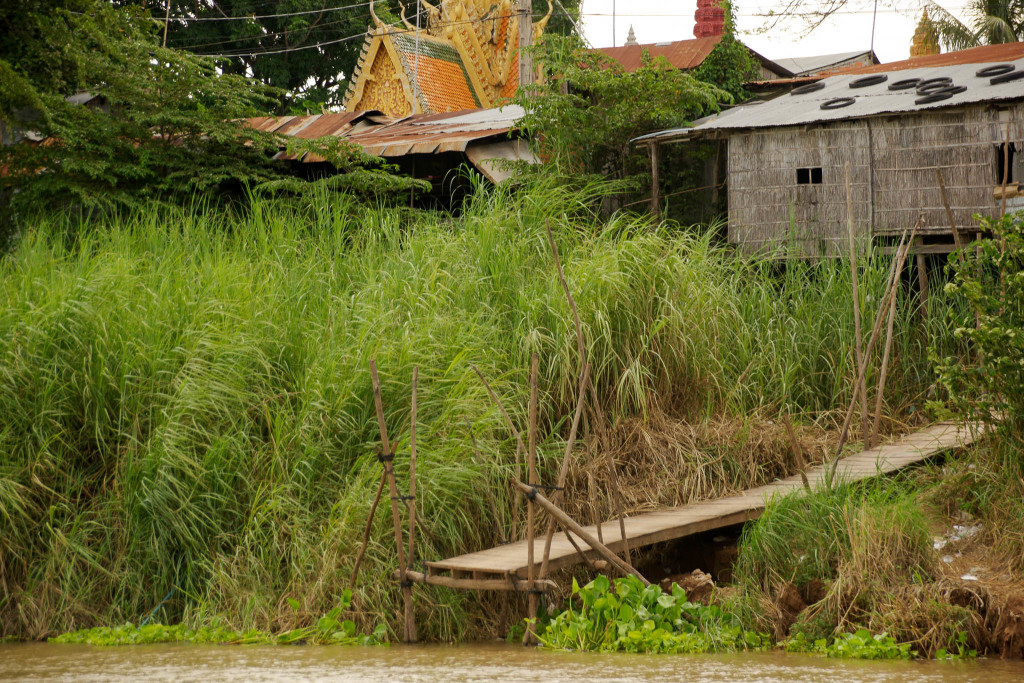On July 21st 2015 we were supposed to have a free afternoon to explore or shoot things we had missed previously in Phnom Penh. However, Caroline heard of an island with an interesting history.
Koh Rumdual was originally called Koh Kho (Death Island). It is a small 3 x 1 km island situated in the middle of the Tonle Bassac River. It was once part of the “Killing Fields.” This is why the inhabitants changed the name to Rumdual, meaning white flower found in Cambodia.
Years ago, this island was set up to be a widows’ colony. It was sponsored by an NGO, but at some point the NGO ran out of funds and abandoned the project leaving nearly one hundred families stranded here. Some were handicapped, some were blind, and others were too poor to make a move. Some were widows having many children but no husband. All decided to stay there, trying to survive off what the island produced, including fruits, tree leaf soup, frogs, and lizards, which they would hunt and grill for their meals.
For more information, see http://www.familycare.org/network/cornerstone-project/koh-rumdual-island-project/
The six of us headed out in two tuk-tuks to find the island. Our tuk-tuk drivers knew the general direction but not the exact place. On the way we saw this monastery, a man building a brick wall inside the monastery, and the monk who tried to help us find our destination.
It took close to two hours to find the place where we could “catch” our transportation to get to the island. No wonder we had some trouble finding the location! Not like there was a big sign or anything. Here is a photo taken from the street where we arrived with the tuk-tuks. You can see Tim checking out the river and the island in the distance.
We met a young woman called the barge and accompanied us to the island. She is related to one of the islanders, who was the contact person we had found.
During our short barge ride across the river, this is a family we saw in their small boat.
Finally we arrived at the walkway to go from our barge to the island.
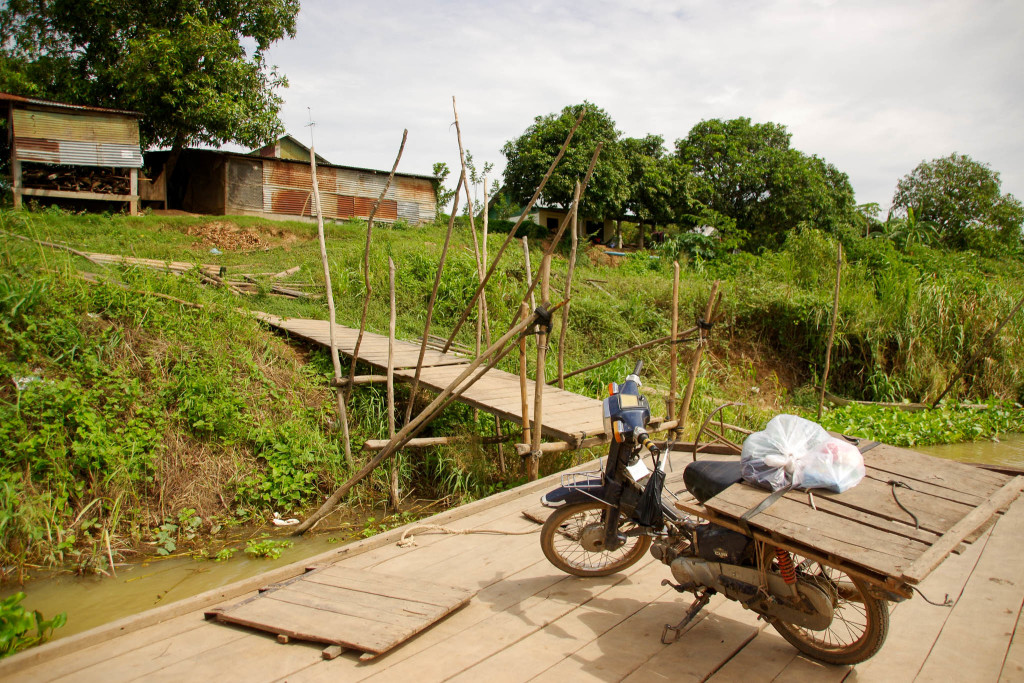
This island is lush and sparsely inhabited.
Some of the homes are more substantial than others but most are quite shabby.
Children and adults… mostly women.
The school that was built by the NGO is currently a popular meeting place and is still used as a school for the children of the island.
Here Karl is showing this group of islanders a photo on his cell phone.
Finally we depart to take our barge across to the mainland.
